1. Third Session
1.1. Step (9): Review of Learning Objectives
1.2. Step (10): Management
1.2.1. Goals
1.2.1.1. Reversing damage
1.2.1.2. Preventing insults to the liver
1.2.1.3. Identify medication injurious to the liver
1.2.1.4. Managing abnormalities and complications of cirrhosis
1.2.1.5. Liver Transplantation
1.2.2. Alcohol-induced cirrhosis
1.2.2.1. Stop alcohol intake
1.2.2.2. Target symptoms
1.2.2.3. Alcohol abstinance
1.2.3. Hepatitis B
1.2.3.1. Treat the infection to slow the progression
1.2.3.1.1. Happens in early or compensated stage
1.2.3.2. Steatosis
1.2.3.3. Short period use interferon
1.2.3.3.1. Side effects
1.2.3.3.2. for 12 months
1.2.3.4. Anti-viral drugs
1.2.3.4.1. in Compensated
1.2.3.4.2. For life
1.2.3.5. When to initiate treatment
1.2.3.5.1. Liver failure
1.2.3.5.2. Uncompensated
1.2.3.5.3. Depends on viral load
1.2.3.5.4. Check HBeAg
1.2.4. Stress
1.2.4.1. refer to psychiatrist
1.2.5. Complications
1.2.5.1. Varecial bleeding
1.2.5.2. Spontaneous bacterial peritoneitis
1.2.6. Assesing of liver cirrhosis
1.2.6.1. PT
1.2.6.2. Encephalopathy
1.2.6.3. etc...
1.2.6.4. Model for end stage liver disease
1.2.6.4.1. Bilirubin
1.2.6.4.2. INR
1.2.6.5. Determining prognosis
1.2.7. Supply deficiencies
1.2.7.1. Coagulation factors
1.2.7.2. Vitamins
1.2.7.3. Proteins
1.2.8. Spironolactone
1.2.8.1. Superior to others in ascites
1.2.8.2. Low sodium diet
1.2.8.3. Shift to furosemide
1.2.9. Vaccination against...
1.2.9.1. Hep A
1.2.9.1.1. Unless the patient recovered from previous infection
1.2.9.2. Influenza
1.3. Liver Transplant
1.3.1. Reciepent
1.3.1.1. Cardiac problems
1.3.1.2. Lung problems
1.3.1.3. Not Hep C +ve
1.3.2. Donor
1.3.2.1. Non-living donor
1.3.2.2. Take only a part from the liver
1.3.3. Prognosis
1.3.3.1. Personnel
1.3.3.2. Donor
1.3.3.2.1. Wellbeing
1.3.3.2.2. HIV
1.4. Step (11): Feedback & Resources
2. Second Session
2.1. Step (6): Review of Learning Objectives
2.1.1. Anatomy
2.1.1.1. Largest gland in the body
2.1.1.2. Significant metabolic functions
2.1.1.3. Located in RUQ
2.1.1.3.1. Two lobes
2.1.1.3.2. Separated by falciform ligament
2.1.1.3.3. Boundaries
2.1.1.4. Histology
2.1.1.4.1. Functional unit
2.1.2. Hyperbilirubinemia
2.1.2.1. Unconjugated
2.1.2.1.1. Hemolysis
2.1.2.1.2. Excess production
2.1.2.1.3. Increase uptake by the liver
2.1.2.2. Conjugated
2.1.2.2.1. Hepatic
2.1.2.2.2. Post-hepatic
2.1.2.2.3. How to differentiate between them
2.1.2.2.4. Intrahepatic cholestasis
2.1.3. Alcohol consumption
2.1.3.1. Alcoholic hepatitis
2.1.3.1.1. Up to 30%
2.1.3.2. Fatty liver
2.1.3.2.1. Up to 100#
2.1.3.3. Investigation
2.1.3.3.1. LFT
2.1.3.3.2. US
2.1.3.3.3. Bilirubin
2.1.3.4. Hepatocellular carcinoma
2.1.3.5. Different type of acololic beverage
2.1.3.5.1. Spirits
2.1.3.6. Duration
2.1.3.7. Genetic predisposition
2.1.3.8. Clinicopathoological effects
2.1.3.8.1. Steatosis
2.2. Step (7): Gathering Information & Inquiry Plan
2.2.1. History
2.2.2. Physical Examination
2.2.3. Investigation
2.3. Step (8): Diagnostic Decision
2.3.1. Mechanism
2.3.2. Presentation
2.3.3. Supporting Data
3. First Session
3.1. Step (1): Identifying Difficult Words & Cues
3.1.1. Difficult Words
3.1.2. Cues
3.1.2.1. 48 old male
3.1.2.2. Married
3.1.2.2.1. 3 Children
3.1.2.3. Migrated to Australia in 1995
3.1.2.4. Works as GP
3.1.2.5. Drinks alcohol excessively
3.1.2.6. Difficulty passing the AMC exams
3.1.2.7. Jaundiced
3.1.2.7.1. 3 weeks
3.1.2.8. Dark Urine
3.1.2.8.1. 3 weeks
3.1.2.9. Feeling fullness
3.1.2.10. Has been off his food
3.1.2.11. Drop in energy level for the past few months
3.1.2.12. Swollen ankle
3.2. Step (2): Problem Formulation
3.2.1. 48 year old male complaining of jaundice, dark urine, fullness in his abdomen, swollen ankles, & recent change in appetite. He drinks alcohol excessively.
3.3. Step (3): Hypotheses Generation
3.3.1. Alcohol consumption
3.3.1.1. Jaundice = hyperbnilirubinemia
3.3.1.2. Increase concentration of bilirubin in blood
3.3.1.3. Jaundice appears as clinical feature
3.3.1.3.1. Hands
3.3.1.3.2. Sclera
3.3.1.4. If liver parenchyma affected
3.3.1.4.1. It cannot metabolize bilirubin
3.3.1.5. Depressant agent
3.3.1.5.1. Taken to be relaxed
3.3.1.6. Early change in alchoholism is
3.3.2. Dark urine
3.3.2.1. defect in conjugation of bilirubin
3.3.2.2. thus dark urine
3.3.3. Alcohol
3.3.3.1. Fatty liver
3.3.3.2. Alcoholic cirrhosis
3.3.3.2.1. Inlfmmation
3.3.3.2.2. Cirrhosis
3.3.3.3. Manifestation
3.3.3.3.1. Acute
3.3.3.3.2. Chronic
3.3.4. Bilirubin
3.3.4.1. Comes from hemolysis
3.3.4.1.1. Pre-hepatic
3.3.4.1.2. Hepatic
3.3.4.2. Life span of RBC
3.3.4.2.1. 120 days
3.3.4.2.2. losses its elasticity
3.3.5. Stress
3.3.5.1. Liver problem
3.4. Step (4): Hypotheses Organization
3.4.1. Pre-hapetic
3.4.2. Hepatic
3.4.3. Post-hepatic
3.5. Step (5): Learning Objectives
3.5.1. To describe bilirubin biosynthesis & metabolism
3.5.2. To list the differential diagnosis of jaundice
3.5.3. To recognize the effects of alcohol on the functions of the liver
3.5.4. To desrice the approach to a patient with jaundice
